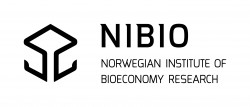The impact of woodchip-gravel mixture on the efficiency and toxicity of denitrification bioreactors
Woodchip-based denitrification bioreactors are widely used for treatment of high loads of nitrate pollution in agricultural run-off water. A concern raised recently, as a consequence of various organic fillings being experimented with, is whether the positive effect given by nitrate reduction could override the negative effects of such bioreactors, mainly caused by degradation of wood and the production of potentially harmful conditions for aquatic ecosystems. This paper presents the results of the experimental testing of two different filling materials: birch (BWCH) and spruce (SWCH) woodchip, and their mixture with washed gravel (WG) in volumetric ratio 10:1.We have focused on the leaching of organic carbon and phenols, and its impact on selected aquatic organisms, aswell as on their denitrification efficiency andNO3 −load removal rate (LRT). The results showthat TOC, DOC and FNI (phenolic index) leaching is higher for the pure woodchip materials and is closely correlated with the growth inhibition of tested organisms (Vibrio fischeri, Daphnia magna, Desmodesmus subspicatus, Lemna minor). The highest denitrification efficiency and the highest load removal rates were recorded in mixed filling material (96% and 1.4 mg NO3 −·dm3·d−1 forWG:BWCH; 85% and 1.2 mg NO3 −·dm3·d−1 forWG:SWCH). Denitrification bioreactors with mixed woodchip filling material present a promising, cheap, and extensive technology for the treatment of agricultural field run-offs.
ŠEREŠ, M.; MOCOVÁ, K.; MORADI, J.; KRIŠKA-DUNAJSKÝ, M.; KOČÍ, V.; HNÁTKOVÁ, T. The impact of woodchip-gravel mixture on the efficiency and toxicity of denitrification bioreactors. Science of the Total Environment, 2019, č. 647, s. 888-894. ISSN: 0048-9697.
























